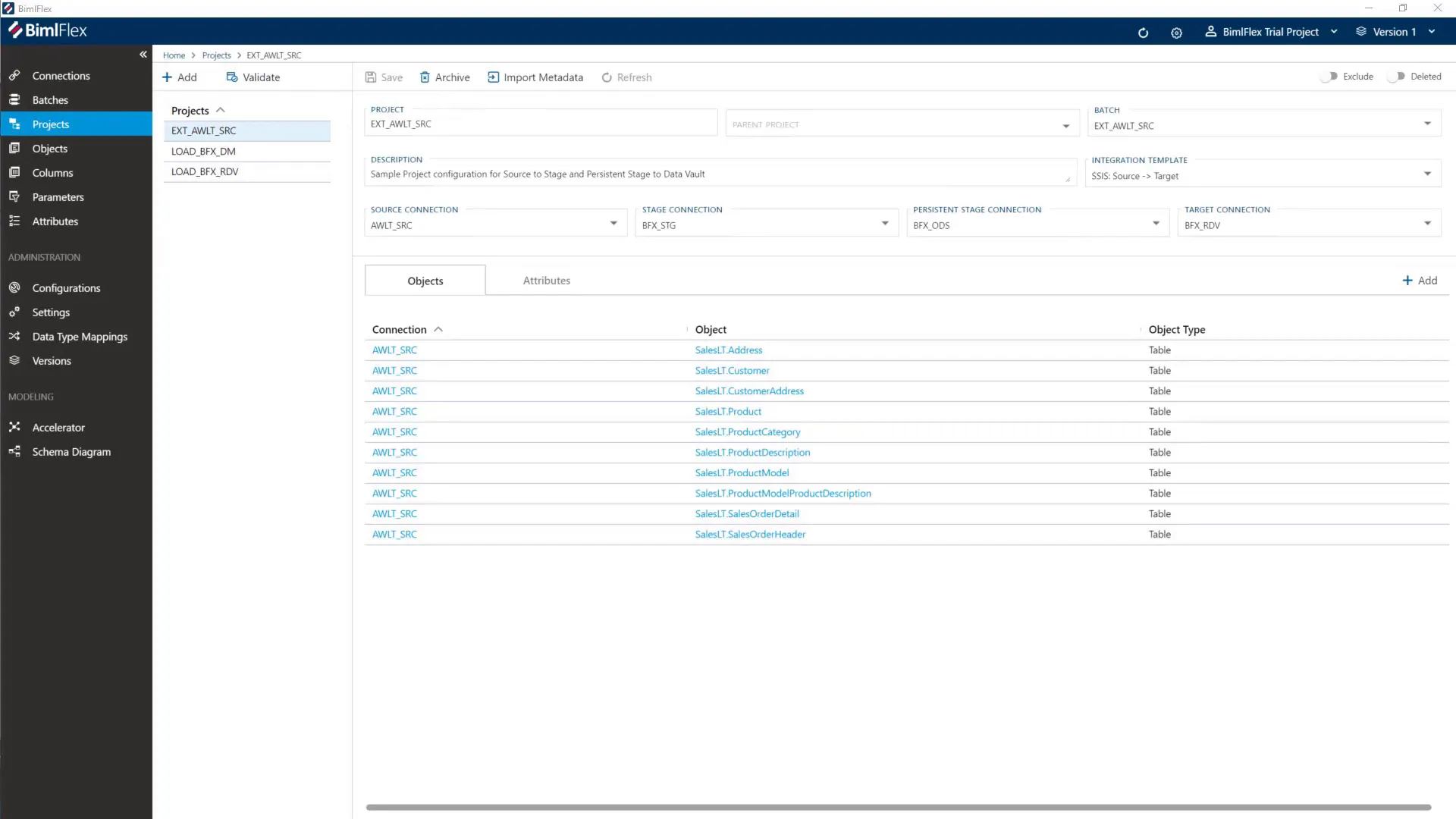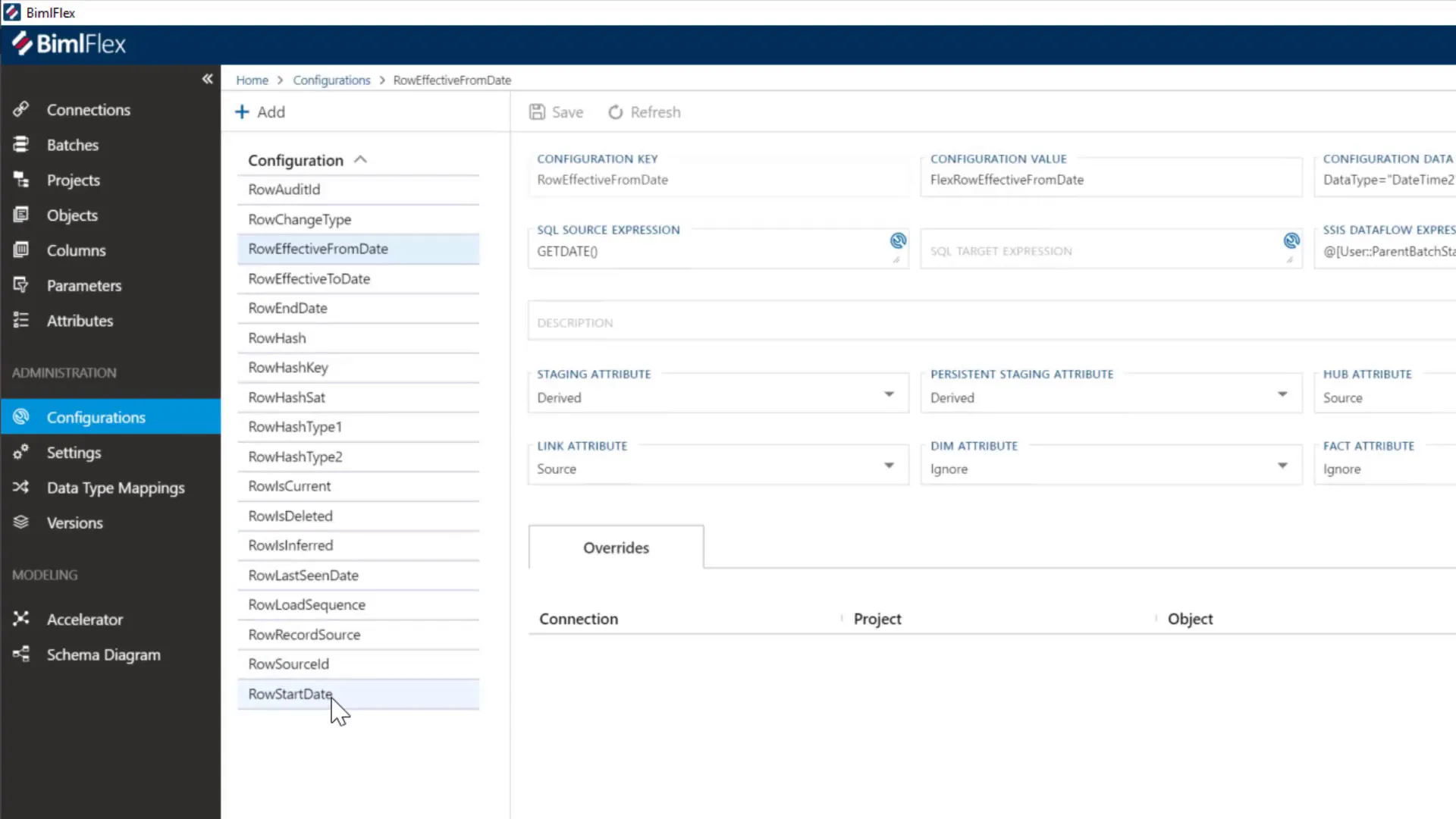BimlFlex Automation End to End
Part 2 : Delivering, Optimizing, and Scaling
May 1, 2025
In Part 1 of this series, we explored how BimlFlex enables teams to set up a consistent metadata foundation, model a scalable Data Vault architecture, and automate build and deployment processes from day one. That groundwork isn’t just about efficiency, it’s about future-proofing.
Now we shift focus from setup to execution. Here, we’ll cover how BimlFlex helps optimize performance through fine-tunedData Vault constructs, streamline the delivery of business-facing data marts, and handle configuration and deployment tasks at scale.
Whether you're pushing to production or managing large enterprise workloads, this phase is where architectural decisions meet operational demands.
Table of Contents - Part 2
- Building Performance-Optimized Data Vault Constructs
- Building and Managing the Data Mart Layer
- Managing Configuration and Resolving Build Errors
- Why It Matters: Delivering Reliable, Scalable Data Warehouses Faster
1. Building Performance-Optimized Data Vault Constructs
To support efficient querying and analytics, Data Vault models often require auxiliary structures like point-in-time (PIT) tables and bridge tables. BimlFlex simplifies the creation of these constructs by allowing users to define PIT tables across selected satellites and bridge tables that maintain correct grain and relationships.
When creating bridge tables, understanding the grain is critical. For example, a bridge on a sales order should not include sales order line details, as that would alter the grain. BimlFlex enforces these best practices through its metadata-driven interface.
These constructs enhance query performance by flattening complex joins and enabling easier reporting across time and relationships.

1.1 Benefits of PIT and Bridge Tables
- Performance: Accelerates complex joins by pre-aggregating data.
- Query Simplification: Easier to write and maintain analytical queries.
- Data Integrity: Maintains correct grain and relationships across business entities.
2. Building and Managing the Data Mart Layer
The final step in the data warehouse pipeline is creating the data mart layer optimized for business consumption. This involves building dimension and fact tables, often as views over staging or Data Vault structures, with business-friendly column names and surrogate keys.
BimlFlex facilitates this by importing views as metadata, allowing cloning of source objects into dimensions or facts with appropriate target schemas and keys. Users can then define relationships between facts and dimensions to form star schemas, including multiple references such as billing and shipping addresses.
Crucially, BimlFlex supports different slowly changing dimension (SCD) types, including type 1, type 2, and hybrid type 6 attributes, enabling flexible historical tracking as per business requirements.

2.1 Benefits of Metadata-Driven Data Mart Construction
- Governance: Ensures consistent naming and key management across marts.
- Flexibility: Supports multiple SCD strategies tailored to business needs.
- Efficiency: Automates lineage and relationship mapping, reducing manual errors.
- Scalability: Easily extends to additional dimensions and facts as requirements evolve.
3. Managing Configuration and Resolving Build Errors
Even with automation, configuration settings play a vital role in successful builds. This comprehensive approach to BimlFlex automation end to end demonstrates how metadata-driven frameworks can streamline complex data warehouse projects while maintaining flexibility and control.
Build errors often relate to missing or misconfigured metadata entries. For example, an error about an inferred row missing can be resolved by setting the corresponding configuration key appropriately. This highlights the importance of understanding and managing configuration metadata.
Once configurations are corrected, the build process can be re-run to generate error-free SSIS packages and database objects, ready for deployment.

3.1 Benefits of Configuration Management
- Control: Centralizes critical settings affecting metadata interpretation and build behavior.
- Problem Resolution: Facilitates quick fixes to build errors related to metadata inconsistencies.
- Adaptability: Supports multiple deployment patterns such as ELT and SSIS-based loads.
4. Why It Matters: Delivering Reliable, Scalable Data Warehouses Faster
By adopting a metadata-driven approach with automation tools like BimlFlex, organizations can overcome the perennial challenges of data warehouse development. This approach enhances:
- Efficiency: Automates repetitive tasks, reducing development time and accelerating delivery.
- Governance: Centralizes metadata management, ensuring consistency and auditability.
- Flexibility: Supports incremental development and evolving business requirements.
- Scalability: Enables handling complex source systems and large data volumes with ease.
- Maintainability: Simplifies ongoing changes and reduces risk of errors.
Ultimately, this leads to faster time-to-insight, improved data quality, and a more agile data platform that can adapt to future needs.
Next Steps
To deepen your understanding and accelerate your data warehouse projects, explore the detailed documentation and advanced training resources available. Consider integrating metadata-driven automation into your CI/CD pipelines to fully leverage the benefits of incremental builds and governance.
Ready to transform your data warehouse development? Schedule a BimlFlex demo today, and be automating your data solution tomorrow.
FAQs
Q1: What is the advantage of using metadata-driven automation for data warehouse development?
Metadata-driven automation centralizes data definitions, automates code generation, and enables incremental development. This reduces manual errors, accelerates builds, and improves consistency across environments.
Q2: How does BimlFlex support incremental data vault modeling?
BimlFlex allows users to start with core business concepts and gradually build out hubs, links, and satellites. Changes are tracked logically and can be published incrementally to physical objects, supporting agile development.
Q3: Can I customize data type mappings in BimlFlex?
Yes. BimlFlex enables mapping source data types to more manageable target types, improving compatibility and simplifying ETL processes, such as converting XML columns into strings.
Q4: How does parameterization improve ETL performance?
Parameterizing source queries using high watermark columns allows extracting only changed data, reducing load times and resource consumption.
Q5: What are point-in-time and bridge tables, and why are they important?
Point-in-time tables capture snapshot states across satellites for historical queries, while bridge tables maintain relationships at the correct grain. Both improve query performance and simplify data mart design.
Q6: How are slowly changing dimensions handled in BimlFlex?
BimlFlex supports type 1, type 2, and hybrid type 6 dimensions, allowing flexible historical tracking based on business requirements.
